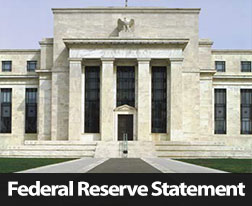 Buying a home isn’t cheap. But if you’re determined to become a homeowner, the FHA home loan program can help. This loan program, ideal for first-time buyers with low incomes, can help you to build your credit and make home ownership a reality.
Buying a home isn’t cheap. But if you’re determined to become a homeowner, the FHA home loan program can help. This loan program, ideal for first-time buyers with low incomes, can help you to build your credit and make home ownership a reality.
So why should you consider an FHA loan? Here are just a few ways you’ll benefit from these government-backed mortgages.
You Can Get Approved With Just 3.5% Down
Traditional mortgage lenders typically require you to pay 20% down on your mortgage, or 5% if you have good credit and agree to pay mortgage insurance premiums. But for a lot of younger people with lots of debt and low incomes, even a 5% down payment is an unrealistic burden. With an FHA loan, you can be approved for a mortgage with a down payment as low as 3.5% – which means a $200,000 home can be yours for as little as $7,000 down.
You Can Get A Loan Even With A High Debt-To-Income Ratio
Standard mortgages are difficult to get if you have a high debt-to-income ratio. Typically, lenders will want to see that your mortgage costs will consume no more than 28% of your income, and your total payments toward debts from all sources will be no more than 36% of your income. But with an FHA loan, you can get a mortgage with a 29/41 ratio.
You Can Qualify With A Low Credit Score
If you have a credit score under 700, you’ll pay higher interest rates on typical mortgages – and if it’s below 660, you may not get approved at all. But with an FHA mortgage, you can get approved for a 3.5% down payment with a credit score as low as 580 – or lower, if you agree to a 10% down payment.
FHA Closing Cost Regulations Are Better For Low-Income Buyers
FHA loans have different closing cost regulations than traditional mortgages. With an FHA loan, you can bundle closing costs into the mortgage or even use gift funds for 100% of the closing costs. That means home ownership is more accessible for people with lower incomes.
An FHA Loan Can Help You Find A Good Home
With most mortgages, you’re free to buy any home you wish as long as you stay within a set price range. But with an FHA loan, any home you buy must be habitable, sanitary, and safe – otherwise the FHA won’t approve your loan. That means using an FHA loan will ensure you get a good home.
Buying a home with an FHA loan is a great way to become a homeowner if a traditional mortgage isn’t an option for you. Call your local mortgage professional to learn more.
![]()

 According to statement issued at the conclusion of today’s Federal Open Market Committee meeting, committee members decided against raising the target federal funds rate. Mixed economic conditions, slower economic growth in the 4th quarter and low inflation contributed to the decision against raising rates. The target federal funds rate was raised in December to a range of 0.25 to 1.59 percent after remaining at 0.00 to 0.25 percent for several years. While rising fed rates were expected to cause a hike in mortgage rates, mortgage rates fell after December’s rate hike.
According to statement issued at the conclusion of today’s Federal Open Market Committee meeting, committee members decided against raising the target federal funds rate. Mixed economic conditions, slower economic growth in the 4th quarter and low inflation contributed to the decision against raising rates. The target federal funds rate was raised in December to a range of 0.25 to 1.59 percent after remaining at 0.00 to 0.25 percent for several years. While rising fed rates were expected to cause a hike in mortgage rates, mortgage rates fell after December’s rate hike. Buying a home isn’t cheap. But if you’re determined to become a homeowner, the FHA home loan program can help. This loan program, ideal for first-time buyers with low incomes, can help you to build your credit and make home ownership a reality.
Buying a home isn’t cheap. But if you’re determined to become a homeowner, the FHA home loan program can help. This loan program, ideal for first-time buyers with low incomes, can help you to build your credit and make home ownership a reality.